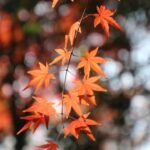Looking for some inspiration to revamp your outdoor space? Whether you have a spacious backyard or a small urban garden, implementing the right garden landscape ideas can transform your outdoor area into a beautiful and inviting sanctuary. From planning and plant selection to hardscaping and sustainability, there are countless ways to create a stunning garden landscape that suits your style and meets your needs.
When it comes to garden landscape ideas, the possibilities are endless. With careful planning and thoughtful design, you can turn any outdoor space into a vibrant and functional oasis.
In this article, we’ll explore various tips and tricks for planning your garden landscape, choosing the right plants, incorporating hardscaping elements, maximizing small spaces, creating a sustainable garden, maintaining year-round beauty, and doing it all on a budget. Whether you’re an avid gardener or just starting out, these ideas will help you create a stunning garden landscape that you can enjoy for years to come.
In the following sections, we’ll delve into the nitty-gritty details of creating an awe-inspiring garden landscape. From selecting the right plants that thrive in your region to integrating sustainable practices into your gardening routine, we’ll cover everything you need to know to elevate your outdoor space. So grab your gardening gloves and get ready to bring your garden landscape ideas to life.
Planning Your Garden Landscape
Assessing Your Space
Before diving into any garden landscape project, it’s important to take a good look at your outdoor space. Consider the size and shape of your garden, as well as any existing features such as trees, pathways, or structures. Take note of areas that receive sunlight versus shade throughout the day. This assessment will help you determine what type of plants will thrive in each area and how to best utilize the space for your desired garden landscape ideas.
Creating a Vision Board
A great way to start planning your garden landscape is by creating a vision board. Gather inspiration from magazines, websites, and even other people’s gardens that you admire. Include elements such as specific plant varieties, color schemes, and hardscaping materials that appeal to you. This visual tool can help guide your decision-making process and ensure that you stay focused on your desired aesthetic.
Seeking Professional Advice
If you’re feeling overwhelmed or unsure about where to start with your garden landscape ideas, consider seeking professional advice. Landscape designers or horticulturists can provide valuable insight into plant selection, layout design, and sustainable gardening practices. They can also offer guidance on how to incorporate eco-friendly elements into your garden landscape design, helping you create a beautiful and sustainable outdoor space.
Choosing the Right Plants for Your Garden Landscape
One of the first steps in choosing the right plants for your garden landscape is to assess the environmental conditions of your outdoor space. Take note of how much sunlight different areas of your garden receive throughout the day, as this will influence which plants will thrive in specific locations.
Additionally, consider the climate in your region and choose plants that are well-suited to those conditions. For instance, if you live in an area with hot summers and mild winters, opt for drought-tolerant plants that can withstand high temperatures and limited water supply.
Incorporating a variety of plant species with different colors, textures, and heights can add depth and visual interest to your garden landscape. Consider mixing flowering plants with foliage-rich varieties to create a dynamic and vibrant outdoor space. Additionally, using native plants can be beneficial as they are already adapted to the local environmental conditions, requiring less maintenance and water compared to non-native species.
By carefully selecting a diverse range of plants that complement one another, you can create a cohesive and visually appealing garden landscape that flourishes throughout the year. Whether you prefer lush greenery or colorful blooms, there are countless garden landscape ideas that cater to different design preferences and maintenance capabilities.
Incorporating Hardscaping Into Your Garden Design
When planning your garden landscape, it’s important to consider the hardscaping elements that will complement the natural beauty of your plants. Hardscaping refers to the non-living features of your outdoor space, such as pathways, patio areas, walls, and decorative elements. By integrating these components into your garden design, you can create a cohesive and visually appealing outdoor environment. Some popular hardscaping materials include stone, wood, concrete, and gravel.
One of the key garden landscape ideas for incorporating hardscaping into your design is to create designated areas for different activities. For example, you might want a specific dining area with a patio or deck for enjoying meals outdoors. Additionally, pathways or walkways made from natural stone or pavers can guide visitors through your garden while adding visual interest and structure to the space.
Another important consideration when incorporating hardscaping into your garden is to choose materials that complement the overall style and aesthetic of your home. For example, if you have a modern house, you may want to consider clean lines and minimalistic design in your hardscape features. On the other hand, if you have a traditional or rustic home, using natural materials like wood and stone can enhance the overall ambiance of your outdoor space.
| Advantages of Hardscape Elements | Tips for Incorporating Hardscaping |
|---|---|
| Provides structure and organization | Create designated areas for specific activities |
| Adds visual interest and focal points | Choose materials that complement your home’s aesthetic |
Maximizing Small Spaces
Living in an urban area doesn’t mean you have to sacrifice having a beautiful garden landscape. In fact, there are many creative ways to maximize small spaces and create a stunning outdoor oasis even in the midst of the city. When it comes to garden landscape ideas for urban dwellers, it’s all about making the most of the space you have available, whether it’s a tiny balcony, rooftop, or courtyard.
One of the key considerations when working with limited space is vertical gardening. This involves using walls, trellises, and hanging planters to grow plants upwards instead of outwards. This not only maximizes space but also adds visual interest to your garden landscape. Consider planting trailing vines, as well as herbs and flowers that can thrive in containers and hanging baskets.
Another important aspect of maximizing small spaces in urban gardens is careful planning and organization. Take the time to assess your available space and determine what areas receive the most sunlight or shade throughout the day. This will help you make informed decisions when selecting plants for your garden landscape. Additionally, consider multi-functional furniture that can serve as both seating and storage for gardening tools and supplies.
When creating a garden landscape in a small urban space, it’s essential to carefully consider each element in order to make the most of every inch of available space. By implementing these garden landscape ideas for urban dwellers, you can transform even the tiniest outdoor area into a lush and inviting retreat within the bustling cityscape.
Creating a Sustainable and Eco-Friendly Garden Landscape
Benefits of Sustainable Gardening
Sustainable gardening not only benefits the environment, but it also brings long-term advantages to your garden. By using environmentally-friendly practices, you can reduce your carbon footprint, conserve water, and promote biodiversity in your outdoor space. Additionally, sustainable gardening can save you money on water and energy bills while creating a healthier and more vibrant garden landscape.
Water-Wise Garden Design
One key aspect of creating an eco-friendly garden landscape is to incorporate water-wise design principles. This involves selecting native plants that are adapted to the local climate and require minimal watering once established. Additionally, incorporating rainwater harvesting systems and drip irrigation can further conserve water usage in your garden. By prioritizing drought-resistant plants and efficient watering methods, you can create a sustainable garden landscape that thrives with minimal environmental impact.
Composting and Natural Fertilization
A sustainable garden landscape also utilizes natural fertilization methods such as composting to enrich the soil and nourish plant growth. By composting organic matter such as kitchen scraps, yard waste, and leaves, you can create nutrient-rich soil amendments that promote healthy plant growth without relying on synthetic fertilizers. Embracing natural fertilization not only reduces chemical runoff into the environment but also contributes to the overall health of the garden ecosystem.
By implementing these sustainable gardening practices, you can create an eco-friendly garden landscape that is both beautiful and beneficial for the environment. Incorporating water-wise design principles, composting, and natural fertilization techniques will not only enhance the sustainability of your outdoor space but also contribute to a thriving and resilient garden year after year.
Seasonal Garden Landscape Ideas
When it comes to creating a garden landscape that thrives year-round, it’s important to consider the changing seasons and how they can impact your plants. By incorporating a variety of plants that bloom at different times of the year, you can ensure that your garden always has something beautiful to offer. Here are some seasonal garden landscape ideas to help you keep your garden thriving throughout the year:
- Plant a mix of spring, summer, fall, and winter blooming flowers to ensure color in your garden year-round.
- Consider adding evergreen shrubs and trees to provide structure and greenery during the winter months.
- Incorporate plants with interesting foliage or bark for added visual interest during the cooler seasons.
In addition to choosing the right plants for each season, it’s important to consider how you can make the most of your garden space during different times of the year. This may include incorporating features such as outdoor seating areas or fire pits for enjoying the outdoors during cooler months, or providing shade and cooling elements for hot summer days.
Another important aspect of keeping your garden thriving year-round is proper maintenance. Regular watering, fertilizing, pruning, and pest control are essential tasks that will help ensure the health and vitality of your plants in every season. Make sure to also clean up any fallen leaves or debris as part of your routine maintenance to keep your garden looking its best throughout the year.
By carefully planning and implementing these seasonal garden landscape ideas, you can create a beautiful and vibrant outdoor space that will thrive no matter the time of year. Whether it’s spring blooms, summer harvests, fall foliage, or winter interest, there are plenty of options for keeping your garden looking its best all year long.
Budget-Friendly Garden Landscape Ideas
When it comes to garden landscape ideas, creating a beautiful outdoor space doesn’t have to break the bank. With some creativity and careful planning, it’s possible to design a stunning garden landscape on a budget. Whether you’re working with a small backyard or a large outdoor area, there are plenty of affordable options that can help you make the most of your resources.
One budget-friendly garden landscape idea is to incorporate native plants into your design. Native plants are well-suited to the local climate and soil conditions, which means they require less maintenance and watering compared to non-native species. Additionally, native plants are often more affordable to purchase and can help attract local wildlife to your garden.
Another cost-effective option for designing a budget-friendly garden landscape is to repurpose materials and items you already have. For example, old tires can be turned into planters, while wooden pallets can be used to create raised flower beds. By getting creative with materials on hand, you can save money on landscaping supplies while adding a unique touch to your outdoor space.
In addition, consider starting your garden from seeds instead of purchasing mature plants. Seeds are typically much more affordable than fully-grown flowers or vegetables, and they allow you to cultivate a wide variety of plants without breaking the bank. With some patience and nurturing care, you’ll be able to enjoy a colorful and thriving garden landscape without spending a fortune.
| Budget-Friendly Garden Ideas | Benefits |
|---|---|
| Incorporating native plants | Low maintenance and attract local wildlife |
| Repurposing materials | Saving money on landscaping supplies |
| Starting from seeds | More affordable than purchasing mature plants |
Using Color and Texture in Your Garden Landscape Design
To achieve a visually stunning garden landscape, it is essential to consider the use of color and texture in your design. By incorporating a variety of plants with different colors and textures, you can create an eye-catching and dynamic outdoor space. Here are some tips for using color and texture effectively in your garden landscape design:
- Choose a Color Scheme: Decide on a color scheme that will guide your plant selection. You can opt for a harmonious scheme with similar colors, a complementary scheme with contrasting colors, or a monochromatic scheme for a more unified look.
- Consider Foliage Texture: Take into account the texture of the leaves and foliage when choosing plants. Pairing plants with different leaf shapes and textures can add depth and interest to your garden landscape.
- Utilize Flowering Plants: Introduce flowering plants with vibrant blooms to add splashes of color throughout your garden. Consider the blooming seasons of each plant to ensure year-round color.
In addition to plant selection, hardscaping elements such as pathways, walls, and containers can also contribute to the overall color and texture of your garden landscape. Using materials like colored stones or patterned tiles for pathways, as well as textured walls or pottery for containers, can further enhance the visual appeal of your outdoor space.
When incorporating color and texture into your garden landscape design, it is important to consider how these elements will evolve throughout the seasons. Aim for a mix of plants that provide interest and beauty year-round, ensuring that your garden remains captivating no matter the time of year. By carefully considering color and texture in your design, you can create a visually engaging and dynamic garden landscape that will be a joy to behold.
Maintenance Tips for a Beautiful Garden Landscape Year After Year
In conclusion, creating and maintaining a beautiful garden landscape requires careful planning, creativity, and dedication. From choosing the right plants to incorporating hardscaping elements, there are various factors to consider when designing a garden that will thrive year after year. By implementing sustainable and eco-friendly practices, urban dwellers can also maximize small spaces to create stunning gardens that benefit the environment.
To ensure the longevity of your garden landscape, it is essential to prioritize maintenance and upkeep. Regular watering, pruning, and weeding are crucial for keeping your plants healthy and vibrant. Moreover, staying on top of seasonal tasks such as fertilizing and mulching will contribute to the overall health of your garden throughout the year.
When it comes to maintaining a budget-friendly garden landscape, consider utilizing resources such as compost and natural pest control methods. Additionally, by carefully selecting plants that complement each other in terms of color and texture, you can create a visually appealing garden design that will flourish for years to come.
Ultimately, with proper planning and ongoing care, your garden landscape can be a source of beauty and enjoyment for both you and your community. Whether you live in an urban setting or have ample outdoor space, implementing these garden landscape ideas will help you create a stunning outdoor oasis that thrives year after year.
Frequently Asked Questions
What Are the 7 Principles of Landscaping?
The 7 principles of landscaping include simplicity, balance, proportion, variety, emphasis, sequence, and unity. These principles guide the design and arrangement of outdoor spaces to create aesthetically pleasing and harmonious landscapes.
What Are the 7 Steps to Landscape Design?
The 7 steps to landscape design involve assessing the site, creating a rough sketch, developing a detailed plan, selecting plant materials and hardscape elements, preparing the soil and installing the features, maintaining the landscape regularly, and making any necessary adjustments or enhancements.
How Do I Create a Beautiful Landscape on a Budget?
Creating a beautiful landscape on a budget can be achieved by prioritizing essential elements such as focal points and functional areas, opting for low-maintenance plants that thrive in the local climate, using mulch and ground covers to minimize maintenance costs and reduce weed growth, reusing existing materials whenever possible, and considering DIY projects for simple hardscape features.
Additionally, shopping for plants during sales or at discount nurseries can help save money while still achieving an attractive landscape.

Welcome to my gardening blog! I am passionate about plants and enjoy sharing my knowledge and experiences with others. In this blog, I will write about everything related to gardening, from tips on how to get started to updates on my own garden projects.





